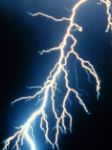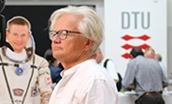
Lightning is such a common phenomenon that people often overlook just how powerful it is (provided it doesn't hit you, obviously). But over the past decade, research has gradually revealed just how extreme lightning is. This everyday phenomenon is powerful enough to produce antimatter and transform atoms, leaving a radioactive cloud in its wake. Understanding how all of this happens, however, is a real challenge, given just how quickly multiple high-energy events take place.

At 8:01 p.m. on October 10, 2018, a bolt of lightning flashed within a storm cloud simply east of the Indonesian island of Sulawesi. The Worldwide Area Station was passing overhead on the time, and a collection of devices noticed because the bolt produced a flash of gamma radiation—and, concurrently, emitted a glowing ring of ultraviolet and visual gentle within the topmost layer of the environment.

Using instruments onboard the International Space Station, researchers have observed millisecond pulses of gamma-rays produced by thunderstorms, clarifying the process by which these flashes are made, and discovering that they can produce an ultraviolet emission known as an "Elve."

Nu er der nyt fra Danmarks store rummission ASIM, som blev sendt i rummet i fjor, hvor DTU Space er videnskabelig leder. Forskerne kan nu forklare mere om de voldsomme fænomener, der opstår i forbindelse med tordenvejr over skyerne. Den nye viden er netop publiceret i det videnskabelige tidsskrift Science.

SAN FRANCISCO—A slew of new discoveries about the mysterious gamma ray flashes that come from Earth’s thunderclouds are being unveiled in presentations at AGU’s 2019 Fall Meeting and in three new studies being published today.

Data on lightning phenomena in Space near Earth captured by the Danish Atmosphere-Space Interactions Monitor (ASIM), on board the International Space Station (ISS), have now been made available to researchers across the globe.

Lightning scientist Torsten Neubert receives the Hans Christian Ørsted Research Award for his contribution to an understanding of how giant lightning bolts are created in space.

Nature article: Mysterious electrical flashes above storm clouds have long puzzled scientists. “This is a game changer,” says Nikolai Østgaard, a space physicist at the University of Bergen in Norway. He described the findings in a pair of talks at the International Union of Geodesy and Geophysics meeting in Montreal, Canada, on 9 and 12 July. Picture: NASA/JSC

The Atmosphere-Space Interactions Monitor (ASIM) was launched last April in an effort to study severe thunderstorms. Just a year later, the observation facility is already providing scientists with a better understanding of the role that thunderstorms play in the Earth’s atmosphere and climate and how lightning is created. Picture: Earth.com